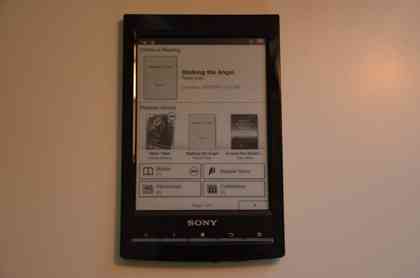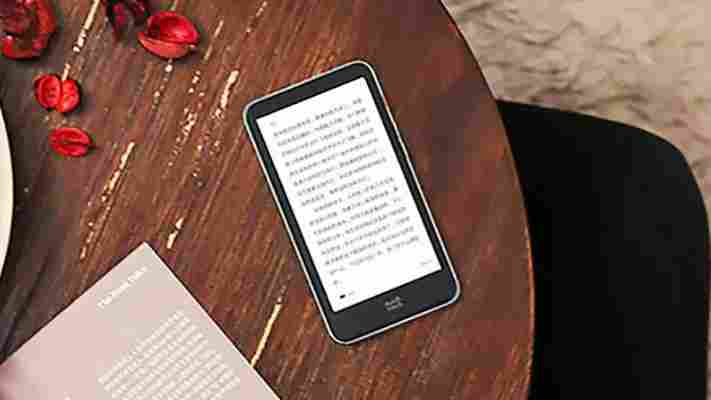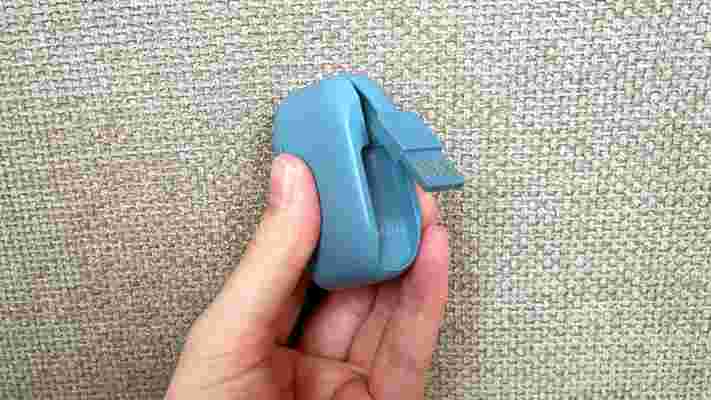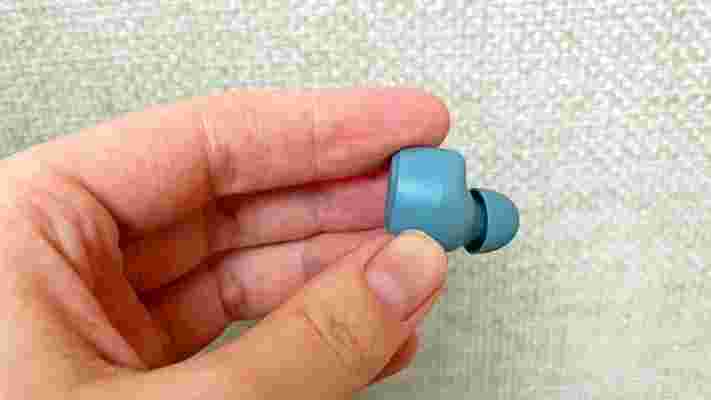One of the most intriguing product launches of MWC 2022 is the Huawei MatePad Paper , which is a tablet with an E-Ink screen. It's also the first product from Huawei to use this kind of tech.
E-Ink screens are different from LCD, OLED, or AMOLED. The reflective technology recreates the look of ink on paper. It's been popularized by all the best ereader brands, like Amazon Kindle devices and Kobo tablets, as well as Onyx Boox ones.
Huawei's new tablet, which comes with a stylus, access to the company's Huawei Books app, and even plays video, is an interesting step into a tech territory that Amazon has previously dominated with its Kindles.
This isn't the first time E-Ink spread its monochrome wings to other brands, Back in the mid-aughts, dozens of companies big and small tried to capitalize on Amazon's Kindle success. CES back then had an entire area devoted to all the new E-Ink tablets. There were even a few color ones. None survived and the tech world quickly turned its attention to iPad competitors.
But now here we are again. Huawei's brand new ereader debut has got us thinking: What if other companies jumped back into the breach and launched E-Ink devices? What would they be like?
Here's a list of five companies that could put out interesting devices into this long-neglected sector.
Apple
This is an obvious one - what would an Apple ereader look like? What would it be called? iReader?
The company is notorious for only launching products when the tech is in a 'finished' state, which is why we haven't seen a foldable from it. In the Apple ereader world that likely means color displays, useful extra apps, and easy connectivity between iPads and iPhones.
That latter point is really important, as Apple fans stick to their ecosystem, and lots of the company's products work well in tandem together. If you can easily pick a book on your iPhone and it download it onto your iReader, or write a note on the ereader with an Apple Pencil, and then drop the result onto your iPad, it'd be a handy device.
Sure, Apple isn't exactly known for offering affordable tech, so the iReader would likely be an expensive device. But for Apple fans, it'd be a handy extra piece of tech.
Samsung
If Apple does it, Samsung has to, too.
Samsung could safely be characterized as Apple's rival, and the company puts out lots of tech that could tempt people who'd otherwise buy an i-device.
A Samsung ereader could borrow traits from the company's other gadgets. Samsung puts out some huge-screen devices, like its Ultra phones or tablets, and has lots of features for its S Pen stylus that make it useful for note-taking. Perhaps a Samsung ereader could be a useful note-taking device that has a much longer-lasting battery than the Tab S8 Ultra or similar.

Sony
Sony's an interesting one on this list, as it actually did make ereaders, called the Sony Readers. Yeah, really imaginative.
When it comes to its gadgets, Sony excels when it makes devices that are specialist tools - just look at its smartphones or cameras. And if it revived its Sony Reader line, perhaps it could do so again.
We could see a device that's designed specifically with note-taking features in mind, similar to the Remarkable Tablet 2 , or as a way to both read and mark up books, which would be really useful to students.
Of all the companies on this list, we imagine Sony is the least likely to do an ereader, as it's tried before and doesn't work as closely in the mobile and tablet sphere as the others (it's the only one here not to have released a tablet, recently), but never say never.
Lenovo
Lenovo is pretty good for its entertainment gadgets - its Yoga Pads are great streaming tablets and it has a whole Legion sub-brand for gaming tech. And since reading is entertaining, an ereader doesn't sound outside the realms of possibility.
Judging by Lenovo's habits, we imagine this wouldn't be a very expensive device, but would perhaps be built with utilitarian features like a kickstand or grip.
Lenovo does make lots of productivity devices too, like its ThinkPad laptops, so perhaps we would see an ereader with useful tools to make it emulate your trusty pocket notebook. Still, we think a luxury book-reading device would be more likely.
HMD Global
Like Lenovo, HMD Global is big on its affordable tech - you'd know it as the brand that makes Nokia devices.
We've listed lots of companies on this list that could build premium devices, but it's always worth remembering the affordable ones, especially since that's what Amazon makes with its Kindle device (depending on which model you choose).
HMD Global's products are built to last, and you'd want an ereader to last you on long trips, in rough conditions, and in bags full of objects it could bump into. Plus, HMD's hardware is supported with software updates for ages and often has huge batteries, too, all things that would be useful for an E-Ink slate.
Honorable mention: Xiaomi

Xiaomi is an honorable mention, and not a 'true' listing, because the company does actually make ereaders, and releases a new one every year or so.
It's on this list, though, because those ereaders only go on sale in China, and we haven't seen any get worldwide launches. The company confirmed to TechRadar that it's not ruling out global launches , but that it hasn't planned one, either.
In the last few years, Xiaomi has cemented itself as a player in the premium market, but it also has great value, budget, and mid-range phones. So, we could rely on the brand's ereaders to be competitive.
I tried some $20 wireless earbuds - and they’re actually pretty good
Finding the very best-sounding headphones on the planet has become something of a personal mission over the years - to me, there’s nothing better than sticking on a pair of chunky over-ear headphones , hitting play on a hi-res stream of one of my favorite songs, and letting myself melt into the music.
These days, you don’t even necessarily need a pair of expensive audiophile cans to enjoy high quality sound - and advances in Bluetooth technology means wireless earbuds and headphones can deliver remarkable audio performances.
Spending a lot of money on a pair of wireless earbuds isn’t a requirement anymore, either. Models like the Cambridge Audio Melomania 1 Plus and the Lypertek PurePlay Z3 2.0 have proven that you can enjoy a neutral, well-balanced soundstage with plenty of detail for less than $100 / £100.
But what about super cheap wireless earbuds like the JLab Go Air Pop ? Are earbuds that cost $20 / £20 ever worth buying? Wanting to find out whether bargain basement buds can cut it, I put my Sony WH-1000XM4 Wireless Headphones away and turned my attention to JLab’s cheapest true wireless earbuds instead .
Flimsy case, not so flimsy connectivity

Opening up the JLab Go Air Pop for the first time, I was struck by how light the charging case and earbuds felt. The flip-top lid snaps in place magnetically, and, as you might expect for $20, it feels quite flimsy - if you do buy these earbuds, you’ll need to treat the case quite carefully to avoid breaking it.
Like their predecessors, the charging case that comes with the JLab Go Air Pop has an integrated charging cable that slots into a groove at the bottom, so it can be tucked away while not in use.
This is a handy feature for anyone that misplaces their cables, but it does mean that if the cable is damaged, the whole charging case will be rendered useless. Speaking of the charging case, it provides a total 32 hours of battery life when combined with the earbuds. The earbuds themselves last for eight hours - not bad at all for the price, and better than the very popular AirPods Pro .
You get three differently-sized gel eartips in the box, so you should be able to find a secure fit for your ears - I was surprised to find the tips already connected to the earbuds were the perfect size for me (usually I have to try a few on first).
Pairing the earbuds with my iPhone 13 mini was a breeze; you have to take the earbuds out of the charging case to put them in pairing mode, unlike the Apple AirPods . This came as another pleasant surprise - all too often, cheap wireless earbuds are plagued by connectivity issues, but the JLab Go Air Pop paired quickly with no issues. These buds also come with touch-sensitive controls, which again, worked seamlessly. Even high-end brands don’t always get this right - consider me impressed.
Then came the real test: how do these cheap earbuds actually sound? I searched for the A-Track remix of the Yeah Yeah Yeah’s Heads Will Roll on Spotify , and hit play.
A dirty window

The audio performance of the JLab Go Air Pop is much better than you might expect for a pair of $20 earbuds. No, they don’t sound anywhere near as good as pricier rivals like the Sony WF-1000XM4 , or even the original AirPods (which are by no means our favorite true wireless earbuds).
The first thing I noticed about the JLab Go Air Pop is just how bass-heavy they are. For a thumpy track like Heads Will Roll, that sound profile works quite well. Audiophiles won’t like how much the lower frequencies overpower the rest of the mix, but if you want a pair of running earbuds that’ll bolster workouts with a strong bass line, the Go Air Pop could work rather well (and with an IPX4 water resistance rating, they should be able to withstand a little sweat).
So, electronica and dance fare quite well. But, stick on anything that has subtle dynamic and harmonic changes, and the low price of the JLab Go Air Pop makes more sense.
Listening to George Harrison’s My Sweet Lord, that strong bass sounded muddy and bloated. The mids - that’s where the all-important vocals and guitar sit - are very recessed, and you don’t get much from the higher frequencies either, which means you miss out on a lot of detail.
The word that came to mind for me was ‘dusty’. That might sound like a strange way to describe a pair of earbuds, but listening to the song reminded me of looking out of a dirty window. Sure, you can see the outside, but you’d need to give it a good wipe down to get any real sense of clarity.
It’s not all bad news, though. In spite of their low price, the Go Air Pop don’t sound overly closed off, and they gave a good sense of directionality from the guitars, lead vocal, and gospel-style backing vocals. Another benefit of the Go Air Pop is how good they are at isolating sound. The in-ear design is really effective in creating a good seal against your ear canal, and even though there’s no active noise cancellation on offer, they block out a decent amount of ambient sound.
You can also customize the sound if you wish (sort of). Triple-tapping either earbud will swap to one of three EQ profiles: Signature, Balanced, and Bass Boost. I did most of my listening using the Signature setting, but the Balanced profile dials the bass down a bit, which is handy if you find the low end really overpowering. Bass Boost is ridiculously bassy, as you might imagine - to the point I started laughing when the kick drum came in on Passion Pit’s Sleepyhead. Don’t even try to listen to tracks with heavy distortion on this setting (but if you do, try listening to Crystal Castle’s Not In Love for a good laugh).
Final thoughts

Having spent a little time getting to know the JLab Go Air Pop, I can tell you that I’m excited to test them more thoroughly - and if you’re interested in finding out how these buds perform in lots of different scenarios, stay tuned for our full review in the coming weeks.
What’s clear already, is that these $20 earbuds outperform their price - but if you are thinking of buying them, you need to have realistic expectations. You’re not going to get the kind of dynamism that makes emotive pieces soar, nor the accuracy to deftly convey complex rhythms and textures.
Instead, these are a pair of cheap earbuds that work well, play music, and have a decent battery life - and they’ll certainly serve you better than any of the Dollar Store headphones tested by our very own Nick Pino recently.
New Xbox Series X games: all the upcoming releases
Looking for a list of all the new Xbox Series X games coming out in 2022 and beyond? Then you've landed on the right page. We're still in the early days of 2022, but we already know there are some huge Xbox Series X/S games on the way this year - and this is where you'll find a rundown of them all.
In 2021, the few months of the year were pretty quiet for new Xbox releases. But that isn't the case this year. In fact, we've already seen the release of some huge games, like Dying Light 2 and Elden Ring . But there's even more to come, with the Saints Row reboot, Gotham Knights and Starfield among the highly anticipated games set to release later this year.
It's going to be a busy time ahead for Xbox Series X and Xbox Series S owners, then, as an absolute litany of new Xbox releases are scheduled for throughout 2022 and beyond. But with so many new Xbox games coming out in the next year or so, it can be tricky to keep track of which games are releasing when – especially considering the number of games that have been delayed over the past year.
So, to help you stay ahead of the new releases, we've put together this handy guide of new Xbox Series X/S games coming in 2022 (and beyond), along with their release dates. Read on to find out when you can expect to get your hands on the biggest new Xbox Series X games. Make sure you check out our new PS5 games and best new games 2022 lists too.
Best new Xbox Series X games 2022: most-anticipated upcoming games



New Xbox Series X games 2022: TBC 2022 and beyond







